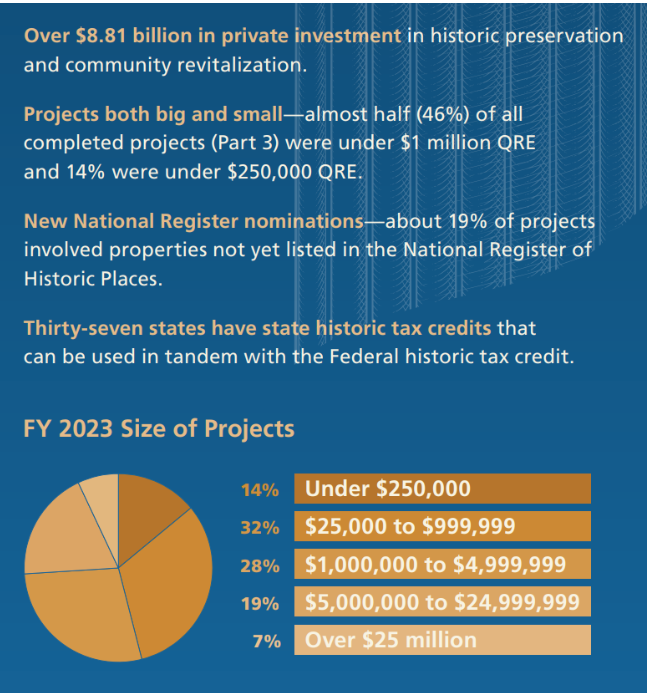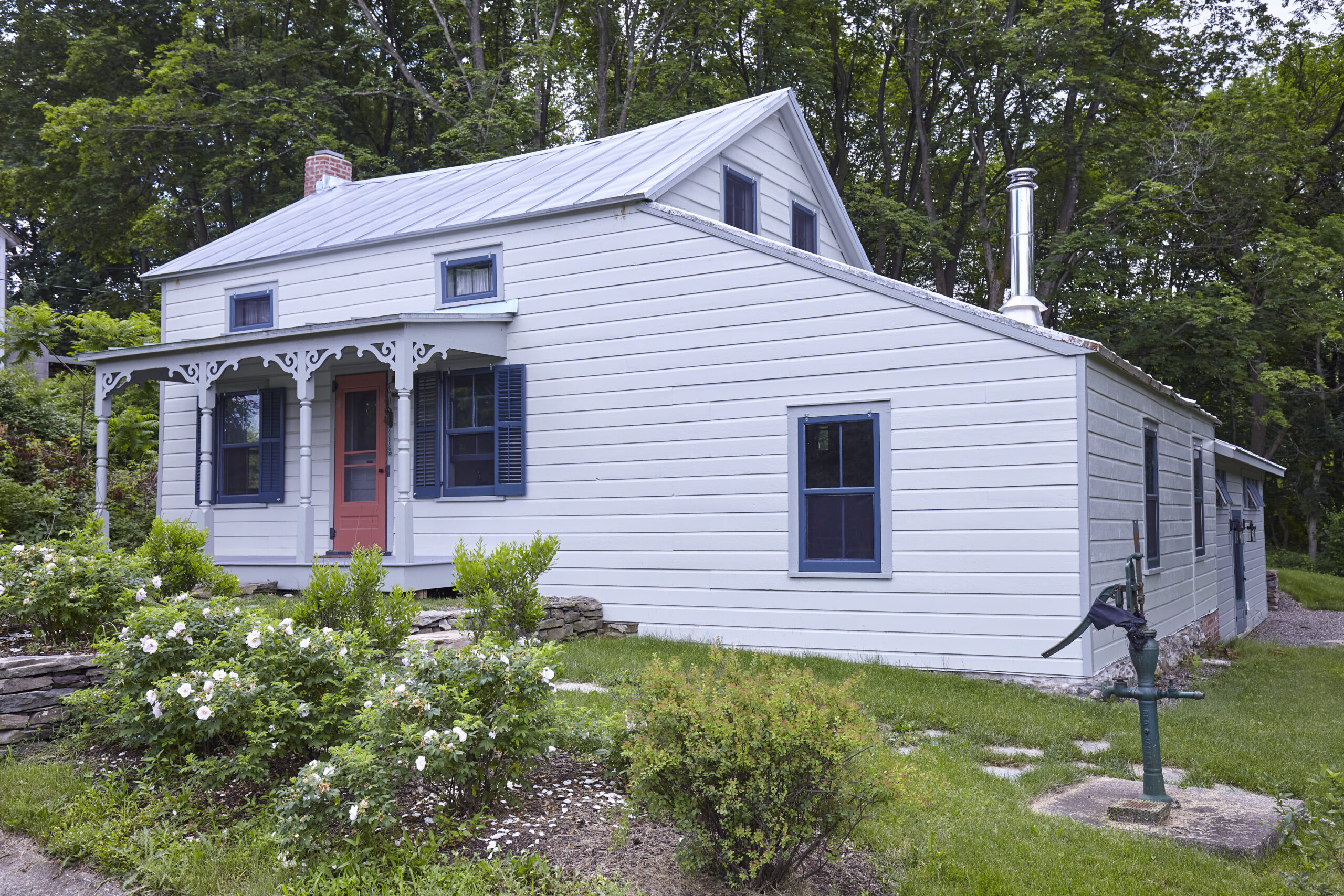If you haven’t heard about historic rehabilitation tax credits, you’re in for a treat.
In a nutshell, it’s a big way the government incentivizes the preservation and adaptive reuse of old buildings. This topic fits in with other posts I’ve written about the National Register of Historic Places because, to qualify for historic tax credits, a property must be at least eligible for listing on the National Register. Also, the property must be placed in some kind of income-producing use. (Some states, including New York, offer historic tax credits for homeowners – see below.)
First of all, what is a tax credit? Simply put, it’s an amount that a taxpayer can subtract from the total amount of income taxes they owe. So, it’s even better than a tax deduction, which reduces a taxpayer’s taxable income and therefore the taxes they owe by a certain percentage. A tax credit is dollar for dollar.
For historic tax credits, the basic math is:
- A taxpayer spends $100,000 on sensitively rehabilitating their historic building.
- If they’ve gone through the process of getting approved for a 20% historic tax credit (more details below), the value of their tax credit is $20,000.
- If they usually owe $36,000 in annual income taxes, their accountant can reduce that amount to $36,000 – $20,000 = $16,000.
- If they’ve been withholding or paying estimated taxes throughout the year, they might get a nice refund check.
Essentially, thanks to preservation advocates and decades of proof that historic rehabilitation tax credits are good public policy for generating jobs and economic activity, enhancing property values, creating affordable housing and paying for themselves many times over, the government will cover a significant chunk of a project’s cost.
Since 1976, the Federal Historic Preservation Tax Incentives Program has provided a 20% Federal tax credit to “property owners who undertake a substantial rehabilitation of a historic building in an income-producing use, while maintaining its historic character.” Here’s a snapshot of its impacts in 2023:

To get into the real nitty gritty, check out 20% Tax Credit Basics – Historic Preservation Tax Incentives (U.S. National Park Service) (nps.gov).
There are also many state-level tax credit programs. For example, New York State offers historic rehabilitation tax credits for both commercial developers and homeowners. The Preservation League of New York State, the advocacy organization, created a whole YouTube playlist about tax credits.
But before you head down the rabbit hole, here are a couple of Worth Preserving case studies to guide you.

At the end of this multi-year project, we reported a little more than $500,000 in “Qualified Rehabilitation Expenses” (the IRS gives a whole list of the kinds of work that do and don’t qualify for tax credits here). Since this once-abandoned house (that we successfully nominated for listing on the National Register of Historic Places) was put back into service as a rental property, it was eligible for both New York State(30%) and Federal (20%) tax credits. So, the owner’s actual cost to rehab this property was reduced by $250,000!*

The New York State Historic Homeowners Tax Credit program works a bit differently. It covers 20% of qualified rehab expenses up to a credit value of $50,000 per year. The great news is that a homeowner only needs to spend a minimum of $5,000 in a tax year (with at least 5% of that spent on the exterior) to claim a credit. For this whole-house rehab project (where expenses from updating plumbing, heating, electrical, floors, insulation, etc. added up) the owners were able to apply for the maximum credit.* That $50,000 savings could eventually cover the cost of a much-needed new roof (for which they’ll be eligible to apply for another tax credit).
The other important thing to note about New York’s homeowners program is that a property must be listed on (or eligible for) the National Register of Historic Places as well as located in a “Qualifying Census Tract”. Head over to the Worth Preserving YouTube channel to watch me demonstrate how to find out if your New York home 1) is listed on the National Register, and 2) in a Qualifying Census Tract. See you there!
*Everyone’s tax situation is different. Must be verified by an accountant

AUTHOR KATE WOOD grew up criss-crossing the country in the family’s Volkswagen Bus, visiting house museums, battlefields, Main Streets, and national parks. Today, she is an award-winning preservationist, real estate broker and principal of the full-service historic rehabilitation consulting firm, Worth Preserving. Kate believes in the essential value of old-building stewardship to sustain community character. For her, each property is a cause and each client a fellow advocate. She specializes in matching people with properties, skilled contractors, historic tax credits and other benefits to support top-tier rehabilitation projects. For advice and solutions to help unlock the potential of your old house, join My Newsletter.